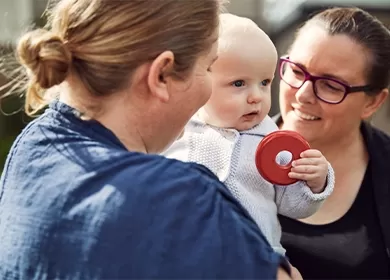Don’t have an account?
Select the donation type you’d like to make
Does your donation have a use-by-date?
At first glance, you might not think the blood you donate has much in common with the groceries you buy, but they all share one thing: a shelf-life.
Maintaining Australia’s life-saving supply of blood is a complex task, involving thousands of people working across the country to keep hospitals and medical facilities stocked with blood and other essential products. Ensuring this supply remains stable doesn’t come without its challenges. Every donation must be tested for a range of diseases, and unexpected surges in demand can put additional pressure on supply, but the biggest challenge of all is time.
From the moment you make a donation, the clock starts ticking. Inside your body, each red blood cell has a lifespan of 120 days, but when you give blood, it can only be stored for 42 days. Why only 42? It’s quite complicated, but one issue is not every red blood cell is the same age. As old cells die, new cells are constantly being created to replace them. This means some of the red blood cells in a donation could be 1 day old, while others could be 119 days old. We can’t test every cell, so donations must be given a shorter shelf-life to account for the presences of these older cells. Fortunately, the shelf-life of plasma donations – which are stored in freezers – is considerably longer at 1 year, but things get a little trickier when it comes to platelets.
Platelets are the unsung heroes of blood donation. Made up of tiny cell fragments, they’re responsible for stopping bleeding and plugging wounds – if you’ve ever had a scab, that’s your platelets at work. People who undergo chemotherapy often experience a drop in their platelet count, which makes them prone to bleeding. As a result, they need platelet transfusions to keep them healthy. To make things even more challenging, the platelets they rely on can’t be frozen or refrigerated, so Lifeblood can only store them for 7 days. Fortunately, platelets are collected with every whole blood donation, so there’s always enough supply to meet demand, but that’s only thanks to the commitment of our regular donors.
Make a life-saving habit
1 year, 1 week, 42 days – these are the use-by-dates for the gift of life, and while they probably weren’t the numbers you were expecting, you’re not the only one. 90% of Australians don’t know how long a blood donation lasts, and only 3% currently donate. At Lifeblood we’re doing all we can to ensure Australians have access to these vital blood products, but the truth is, we can’t do it without regular donors. While even one donation can make a difference, choosing to donate regularly helps maintain a stable blood supply, and ensures those who rely on donations always receive the care they need.
So, whether it’s been ‘a while’ since you last gave blood or you’ve just never quite managed to make that first appointment – now is the time to book a donation, and together we can start a habit that saves lives!
Ready to learn more? Did you know some blood types don’t mix, while others can be given to everyone? Uncover the mysteries of your blood and donation at The School of Lifeblood.




